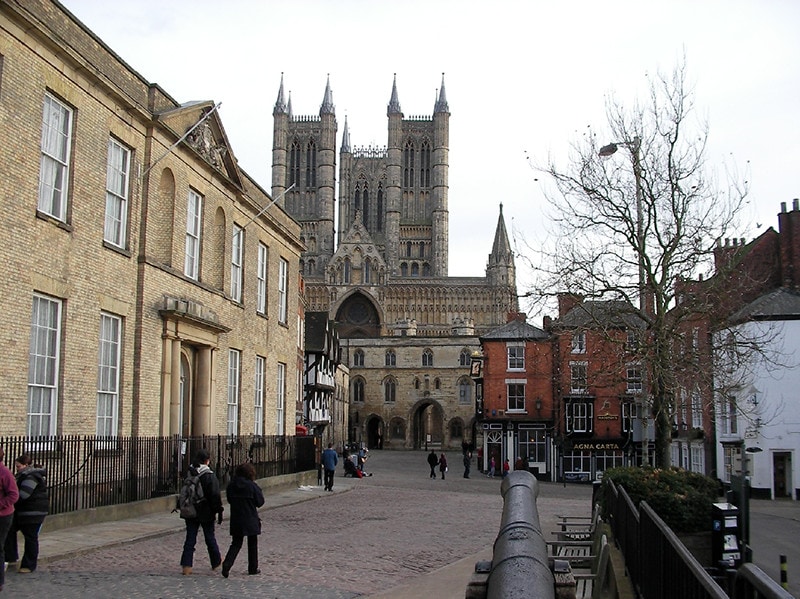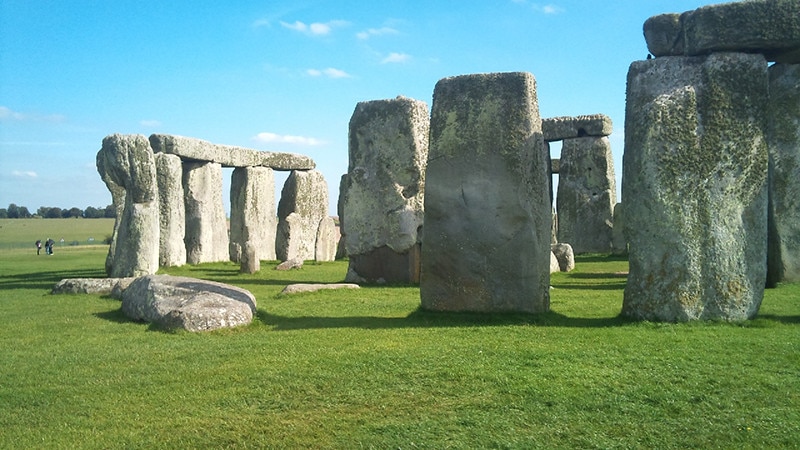15 Construction Statistics in the UK: Updated in 2025
-
Chris Dinesen Rogers
- Last updated:

Note: This article’s statistics come from third-party sources and do not represent the opinions of this website.
You can tell a lot about the health of an economy by the state of its construction industry. Economists refer to it as a leading indicator. It makes sense when you think about it. If new housing is hot, many businesses will benefit from lumber to plumbers. It also shows definitive confidence in one’s ability to make enough money to pay their mortgage every month.
The pandemic shook up the global economy and the construction industry in ways we’re still trying to unfold. Looking at the industry statistics provides several valuable insights into the UK economy’s past and present.
The 15 Construction Statistics in the UK
- Construction businesses employ 2.66 million people.
- Experts estimate that the construction industry’s revenue will increase to £476.6 billion by 2027.
- New work increased by 15.3% in 2021.
- Public infrastructure contributed 37.4% to the new work in the construction industry, making it the largest sector.
- About 30% of construction firms are located in South East England and London.
- New residential dwellings totaled 147,880 in England, 14,830 in Scotland, 6,420 in Northern Ireland, and 4,620 in Wales.
- The UK construction industry experienced 1,044 company insolvencies in Q1 2022.
- Falls from heights accounted for 51% of fatalities.
- Falls, trips, or slips on the same level as the individual caused 26% of non-fatal injuries.
- Construction workers experienced about 10% fewer ill health incidences than all other industries.
- England’s Lincoln Cathedral was once the world’s tallest building at roughly 160 metres high.
- Abbey Gardens welcomed 1.3 million visitors in 2021.
- About 1.6 million people visited Stonehenge in 2019.
- The Shard is the UK’s tallest skyscraper, with a height of 309.6 metres.
- The London Wall is the oldest constructed site in the UK, built sometime between 190 and 225 AD, measuring 4 kilometres long.

State of the Industry
1. Construction businesses employ 2.66 million people.
(Statista, Office for National Statistics)
Of course, construction builds the foundation of the economy—literally! It employs nearly 4% of the country’s total population. That’s a conservative estimate at best. It doesn’t include the secondary industries that it supports, such as lumber, paint, interior design, appliances, and furniture. It’s no wonder that economists consider it the proverbial crystal ball of the economy.

2. Experts estimate that the construction industry’s revenue will increase to £476.6 billion by 2027.
(Statista)
The pandemic put the skids on many industries, including hospitality and construction. It may have been a boon for the DIY segment, but it doesn’t have the same ripple effect as new construction. Fortunately, the outlook is bright for the UK.
3. New work increased by 15.3% in 2021.
(Office for National Statistics)
This stat is probably the most telling of all on our list, referring again to the proverbial trickle-down phenomenon. It’s an excellent number to follow to see where your investments are headed.

4. Public infrastructure contributed 37.4% to the new work in the construction industry, making it the largest sector.
(Office for National Statistics)
This segment bodes well for the country because it has so many positive aftermaths. It’s unfortunate that many projects get scrapped when the well runs dry.
5. About 30% of construction firms are located in South East England and London.
(Office for National Statistics)
This number probably isn’t surprising, given the population density centres of the UK. After all, it’s also where the money is, making it a smart move for the construction industry.

6. New residential dwellings totaled 147,880 in England, 14,830 in Scotland, 6,420 in Northern Ireland, and 4,620 in Wales.
(Statista)
These numbers provide an excellent overview of where the industry operates. It explains the employment concentration and varying differences in the cost of living in the UK.
Health and Safety on the Job
7. The UK construction industry experienced 1,044 company insolvencies in Q1 2022.
(Office for National Statistics)
The construction industry took a bad hit during the pandemic and its aftermath. Few businesses have the overhead or security to weather such a storm, let alone for how long it persists.

8. Falls from heights accounted for 51% of fatalities.
(Health and Safety Executive)
We thought this statistic was surprising and a much-needed wake-up call to make workplaces safer. It’s not hard to imagine why it would rank so high in this category.
9. Falls, trips, or slips on the same level as the individual caused 26% of non-fatal injuries.
(Health and Safety Executive)
It isn’t just heights that trip us up when it comes to injuries. Part of making the construction site safe is to ensure walkways are clear of clutter. It’s also essential for people to scan the view ahead when carrying equipment and other loads.

10. Construction workers experienced about 10% fewer ill health incidences than all other industries.
(Health and Safety Executive)
We can probably point to the physical nature of construction work in general for this figure. The nature of the job demands you stay active, which can have positive effects on your overall health. This stat is living proof.
 Milestones in the UK Construction Industry
Milestones in the UK Construction Industry
11. England’s Lincoln Cathedral was once the world’s tallest building at roughly 160 metres high.
(The Lincolnite)
Bear in mind we’re talking about 1311. However, that makes it even more remarkable, given the state of the construction industry. Think of the weight of materials the workers were hauling and the effort to get them in place. Nevertheless, it still stands with the rest.

12. Edinburgh Castle welcomed 2.2 million visitors in 2021.
(Statista)
Castles are a popular tourist attraction all over the UK. It’s hard not to marvel at the construction of these structures. The fact that many still exist hundreds of years later is a testament to the builders of the time. Edinburgh Castle is one of the must-sees in Scotland.
13. About 1.6 million people visited Stonehenge in 2019.
(Statista)
Equally extraordinary is that it was built between 3000–1520 BC and is still standing today. While historians have theories of its construction, we almost feel as if we want it to remain a mystery. Perhaps that explains why so many are drawn to visiting and experiencing this historical site.

14. The Shard is the UK’s tallest skyscraper, with a height of 309.6 metres.
(Hotels.com)
Construction never fails to astound us. The Shard is a stunning example. Its design and location make it almost appear surreal, especially in a city so in touch with its past. However, it’s fitting, given its place in the world.
15. The London Wall is the oldest constructed site in the UK, built sometime between 190 and 225 AD, measuring 4 km long.
(English Heritage)
Impressive construction is not a recent thing. The Brits had it in hand going back to 190 AD with the London Wall. Its purpose was defence, which probably explains its sturdiness after all these centuries. After all, it had to protect the 134 hectares within it.
Frequently Asked Questions
How has public housing fared in recent years?
Repairing these structures has been a priority, based on the revenue it generated. It is an excellent allocation of these funds since so many benefit from its outcomes.
What can employers do to make construction a safer industry?
Clear communication is paramount to a safe workplace. Everyone on your team must understand the procedures, tool use, and emergency protocols. The wise crew leader will ensure their workers inspect power equipment before each use. That precaution also applies to scaffolding and ladders.
(Health and Safety Executive)

What is the future of the residential construction sector?
The outlook is promising. Experts have predicted an 18.9% increase in 2022. That piggybacks on the 2.9% growth that it has experienced since 2017. The pandemic taught the industry many lessons that can help safeguard it if the unexpected occurs again.
(IBIS World)
What makes construction so hazardous?
Construction poses many hazards for its workers. We have discussed physical injuries, like falls. Other risks include asbestos-related diseases, such as lung cancer and mesothelioma. However, other issues exist with vibration and noise from tools that can have far-reaching effects.
(Health and Safety Executive)
Conclusion
The construction industry of the United Kingdom had a solid start with the Romans. Their workmanship was impeccable, given the longevity of many of the structures they made. The economy has influenced the numbers. However, it has rebounded since the pandemic, with more excellent designs and buildings on the horizon.
Featured Image Credit: 652234, Pixabay
Contents

 Milestones in the UK Construction Industry
Milestones in the UK Construction Industry